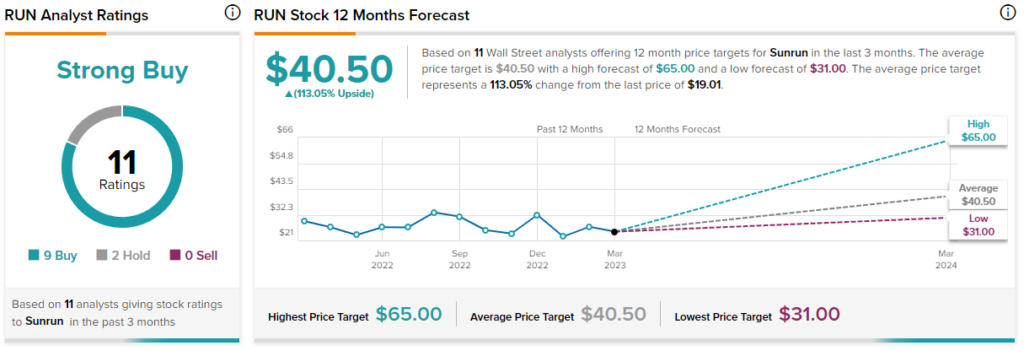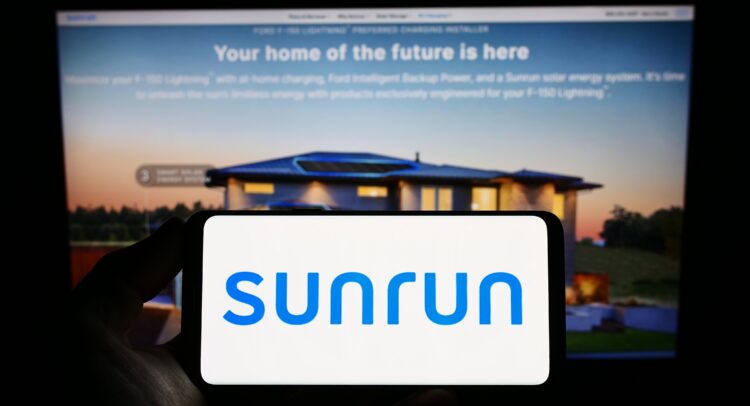Undeniably, the implosions of Silicon Valley Bank (SVB) and Signature Bank dominate current business headlines. However, investors should also be cautious of enterprises caught in the crossfire, such as secondhand victim Sunrun (NASDAQ:RUN). Specializing in photovoltaic systems and battery storage products, Sunrun has little to do with banking. Still, RUN stock got caught in the wrong place at the wrong time, as the economic implications of such an event don’t bode well for the stock. I am neutral on the solar energy specialist.
Don't Miss our Black Friday Offers:
- Unlock your investing potential with TipRanks Premium - Now At 40% OFF!
- Make smarter investments with weekly expert stock picks from the Smart Investor Newsletter

SVB’s Implosion Sent Shockwaves Throughout the Market
As TipRanks contributor Yulia Vaiman noted wryly, it’s a dangerous time to be vested in banking. Indeed, Silicon Valley Bank’s implosion sent shockwaves throughout the financial system. In particular, it impacted the U.S. regional banking stock index, leading it to its worst week since 2020. Over the past weekend, Signature Bank failed as well. With regulators closing shop on both enterprises, the Federal Deposit Insurance Corporation (FDIC) quickly moved in to protect uninsured depositors.
While many hope that the banking contagion won’t spread to other financial institutions, significant risks still exist. Fundamentally, Silicon Valley’s demise centered largely on its bond purchases back when yields sat at significant lows. However, when the Federal Reserve began tightening the money supply, the action subsequently raised yields. Unfortunately, this dynamic translated to Silicon Valley holding large unrealized losses.
Basically, under a high-yield environment, anyone can go to the open market and buy higher-yielding bonds. Thus, in a bid to raise capital, Silicon sold its bonds at a discount, exacerbating its suddenly vulnerable position.
Now, RUN stock comes into the picture because the underlying enterprise had cash deposits with Silicon Valley totaling nearly $80 million. However, that’s only part of the worrying narrative.
RUN Stock Caught in a Fundamental Downdraft
In a joint statement by the Treasury, Federal Reserve, and the FDIC, the U.S. government committed to protecting households and businesses blindsided by the banking sector implosion. So, that’s the good news for RUN stock. Unfortunately, however, Sunrun also finds itself in a fundamental downdraft. It has access to its money, but the underlying economic paradigm has shifted.
Primarily, the headwind for RUN stock centers on the deflationary nature of bank runs. Both Silicon Valley and Signature failed because they could not meet their clients’ withdrawal requests. Therefore, it’s not so much about the collapse of these two enterprises that should worry Sunrun. Rather, it’s that people may not trust banks to hold onto their funds.
Moreover, if customers pull their money out of their accounts and transfer it to their personal vaults, the subsequent effect would be deflationary — fewer dollars chasing after more goods. For an industry that depends on growth, such as the solar energy sector, deflation represents a killer.
As well, deflation kills jobs. With slowing economic activity comes fewer employment opportunities available. Indeed, that’s the Fed’s goal – to curb inflation by slowing the hotter-than-expected jobs market. Unfortunately for RUN stock, though, cooling the economy also means fewer households rich enough to buy solar energy systems.
Further, the federal government will likely find it difficult to find investors willing to support the critical banking industry. As the aforementioned joint statement declared, “Shareholders and certain unsecured debtholders will not be protected” from the two banking implosions.
Sunrun’s Financials are Not Ideal
Such a rejection of investor coverage suggests that moving forward, the companies poised to survive will be profitable, established entities. Unfortunately, that’s not the case for Sunrun, which is structured for growth now and robust earnings later.
For instance, its three-year revenue growth rate on a per-share basis stands at about 15%, ranking better than 64.8% of the competition. However, its trailing-year operating margin is 28.53% below zero, worse than 90.35% of its peers. And while its net margin is positive at 7.47%, this metric ranks worse than 56% of sector rivals.
Heading into uncharted waters, Sunrun carries a sickly cash-to-debt ratio of 0.08 times, worse than almost 96% of its peers. As well, its Altman Z-Score (a solvency metric) sits at 0.36, indicating a distressed enterprise.
Is RUN Stock a Buy, According to Analysts?
Turning to Wall Street, RUN stock has a Strong Buy consensus rating based on nine Buys, two Holds, and zero Sell ratings. The average RUN stock price target is $40.50, implying 113.05% upside potential.

The Takeaway: RUN Stock Got Caught Out
With political and ideological trends pointing toward a bright future for solar energy, in theory, RUN stock should perform well. Sadly, though, the underlying company simply got caught in the banking crisis. Now that circumstances point toward a deflationary ecosystem and a worsening economy, Sunrun faces a questionable future. Therefore, prospective investors must exercise great caution.



















